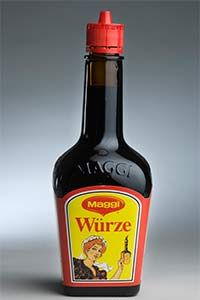A slice of juicy watermelon is the perfect summertime treat – refreshing and light and just the right amount of sweet. Next time you cut open a watermelon, though, try this weird little trick: sprinkle a slice with a pinch of salt. Salty watermelon? I know, it sounds wrong, but instead of tasting salty, the watermelon will pop with sweetness.
Taste is the least understood of the five senses. There is no single organ, chemical receptor or neuron in the human body that's solely responsible for decoding the molecules and compounds in foods and translating them into flavors. Yet our bodies and brains work together to quickly differentiate salty from sweet, bitter from sour, and yucky from yummy.
Advertisement
As little as we understand about the chemistry of taste, we know that certain naturally occurring substances and chemical additives have the mysterious effect of enhancing the flavor of food. Salt is the classic flavor enhancer. For 10,000 years, humans have been adding salt to their food, initially as a preservative, but also because salt has the power to make even the most bitter vegetables and gamy meats taste delicious [source: Henney et al.].
Glutamate is another naturally occurring substance believed to give foods like seaweed, mushrooms and Parmesan cheese their distinctly savory and almost meaty flavor. In the early 20th century, Japanese researchers isolated pure glutamate and paired it with the salty kick of sodium to create one of the most potent and controversial flavor enhancers of all time: monosodium glutamate or MSG.
All of us consume flavor enhancers every day, sometimes in alarming amounts. They are added to our favorite processed foods, restaurant meals and snacks to make the sweet and savory flavors "sing" and to suppress hints of chemical bitterness. Nacho Cheese Doritos, one of the most objectively delicious snacks on the planet, contain not only loads of MSG, but seven other glutamate-rich ingredients (like Romano cheese, and onion and garlic powders). They also have plenty of salt [source: Souza].
Even the healthiest home cook knows how a few cranks of salt, a dash of soy sauce or a dollop of glutamate-rich Maggi sauce can make the difference between health-food blandness and the clean-plate club. But why?
Join us as we investigate the science of taste and learn how a handful of natural compounds and controversial chemicals can trick our brains into saying "more!"
Advertisement



